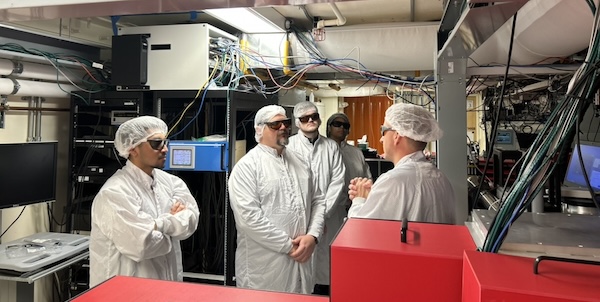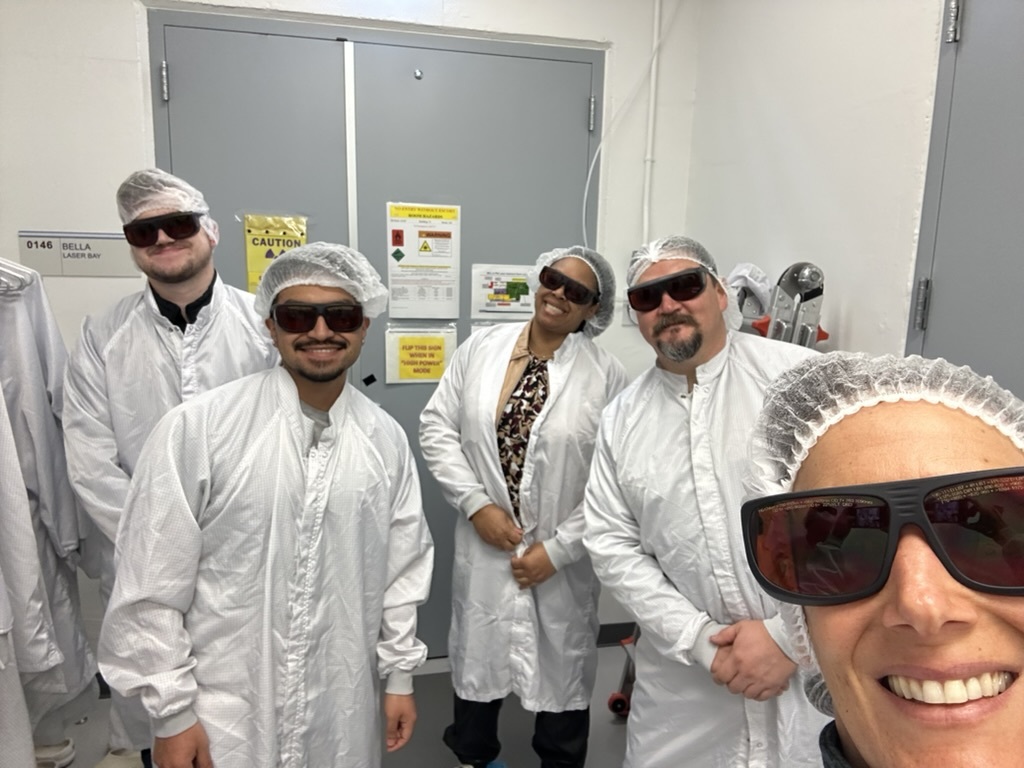Resources
Resources
LaserNetUS Kicks Off Network-Wide Technical Exchange Program
Feb 5, 2025. News

Jupiter Laser Facility technical staff tour the BELLA Center.
SAN FRANCISCO, CA — LaserNetUS is delighted to announce the launch of its highly anticipated Technical Exchange Program, a new strategic initiative designed to optimize federal funding, enhance user experience, and advance and increase scientific research and output.
The program leverages the cumulative capabilities of technical staff across the LaserNetUS network to achieve these critical objectives through hosting inter-facility site meetings. For the meetings, technical teams from different LaserNetUS facilities visit other LaserNetUS technical teams and tour their facilities and laser systems to exchange information, offer insights, and gain deeper knowledge across the organization. The primary goal is to broaden collective expertise throughout LaserNetUS and foster a collaborative environment that elevates operational standards.
As the inaugural organizer, the Jupiter Laser Facility (JLF) team from Lawrence Livermore National Laboratory (LLNL) played a pivotal role in bringing this exchange program concept to fruition. JLF Director Dr. Félicie Albert instituted the first LaserNetUS technical exchange when the JLF technical team visited the Berkeley Lab Laser Accelerator (BELLA) Center at Lawrence Berkeley National Laboratory (LBNL) on December 18, 2024.

During the field trip, the JLF team toured two of BELLA's laser systems—the BELLA Petawatt and the BELLA Hundred Terawatt lasers. These in-person gatherings provided the JLF team an invaluable opportunity to sit down with the LBNL team to review and refine operational procedures, identify best practices, develop strategies for enhancing the experiences of experimental users and visitors, and assess ways to increase research productivity.
"It was great to see how another facility operates," remarked Dr. Albert. "We looked at technical details common to both facilities, such as how we operate our vacuum systems. This exchange is a prime example of the potential benefits we can unlock by learning from each other."
Starting with local Bay Area LaserNetUS labs, this activity is expected to extend to the entire network—currently, 13 members across North America and comprising 12 high-intensity laser facilities and one supporting facility—contingent upon available funding and productive outcomes from these initial exchanges. The overarching intent is to establish robust best practices that benefit the whole of LaserNetUS. With support from the U.S. Department of Energy (DOE) and the collaborative efforts of its technical teams, LaserNetUS continues its ongoing quest to achieve significant progress in laser operations and thereby foster a stronger and more capable network.
About LaserNetUS
Founded in 2018, LaserNetUS is a U.S. Department of Energy (DOE) Office of Science initiative providing scientists access to a network of high-power laser facilities across the U.S. The program fosters collaboration and supports cutting-edge research in areas such as plasma physics, materials science, and particle acceleration.
Media Contact:
Dr. Chandra Breanne Curry
LaserNetUS Coordinator
ccurry@slac.stanford.edu
More From News